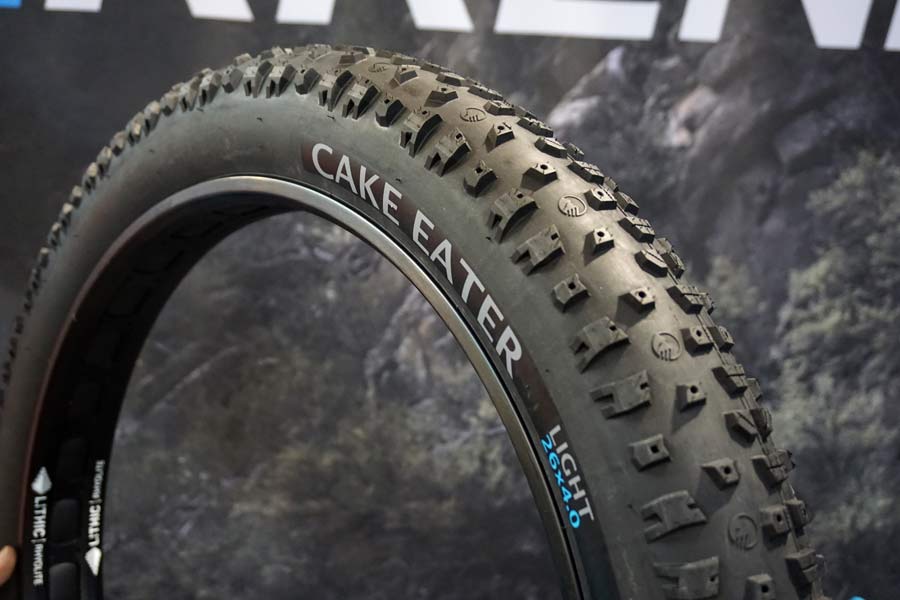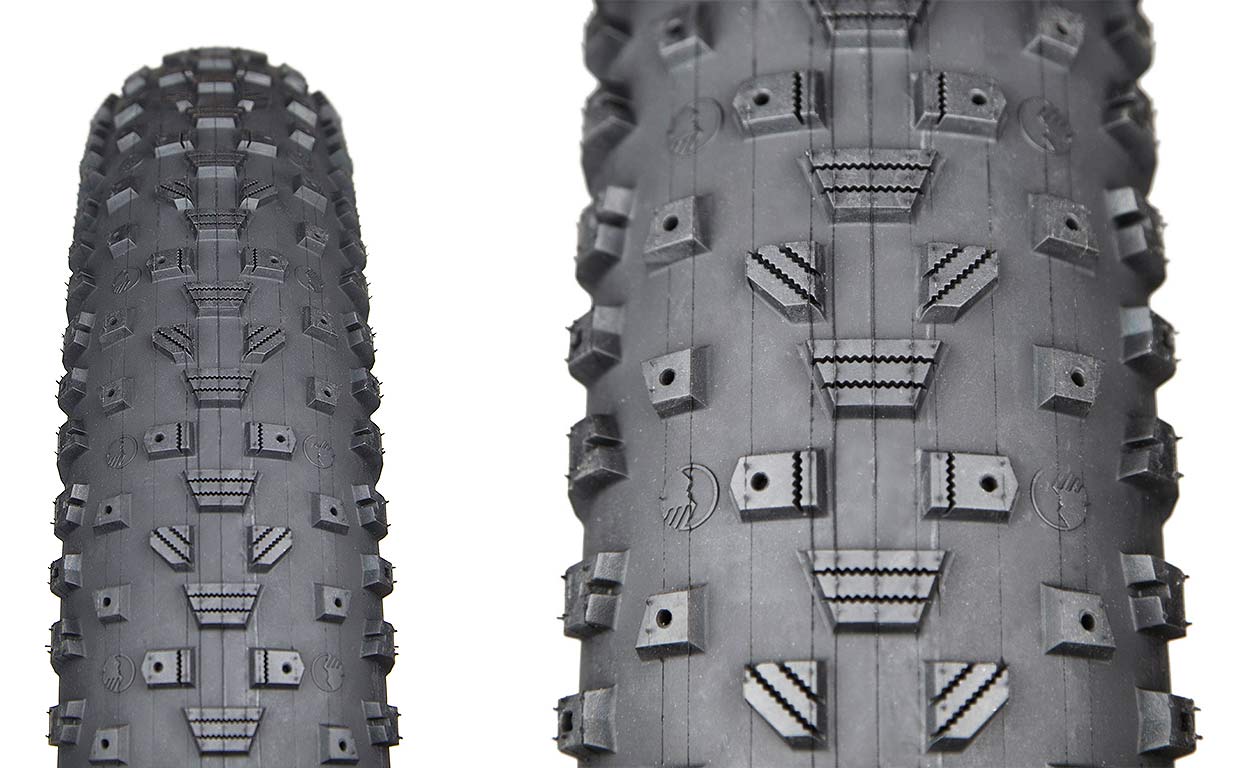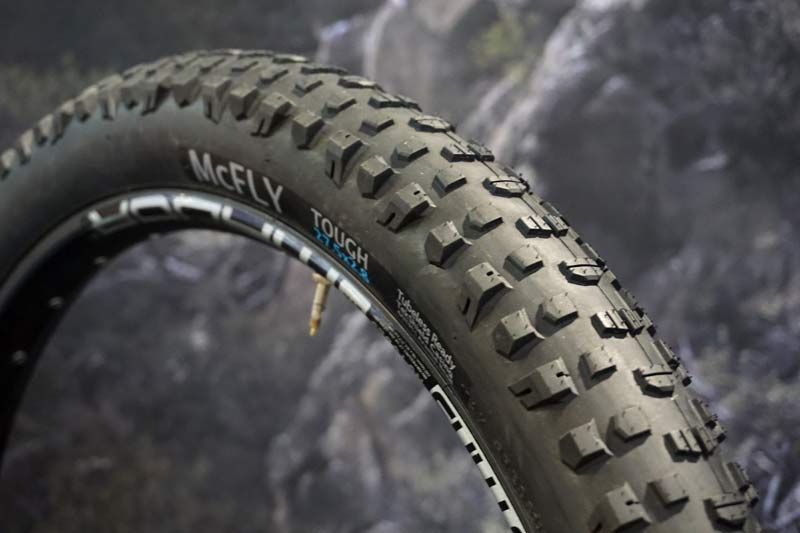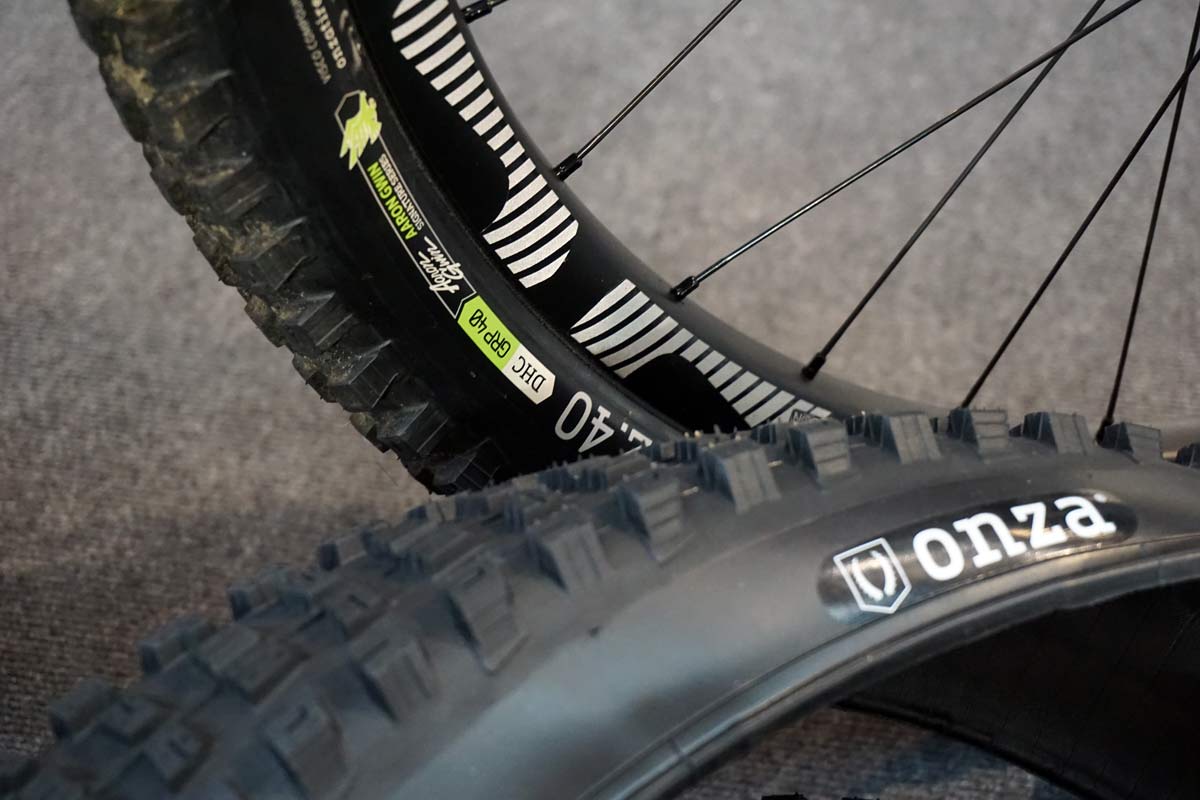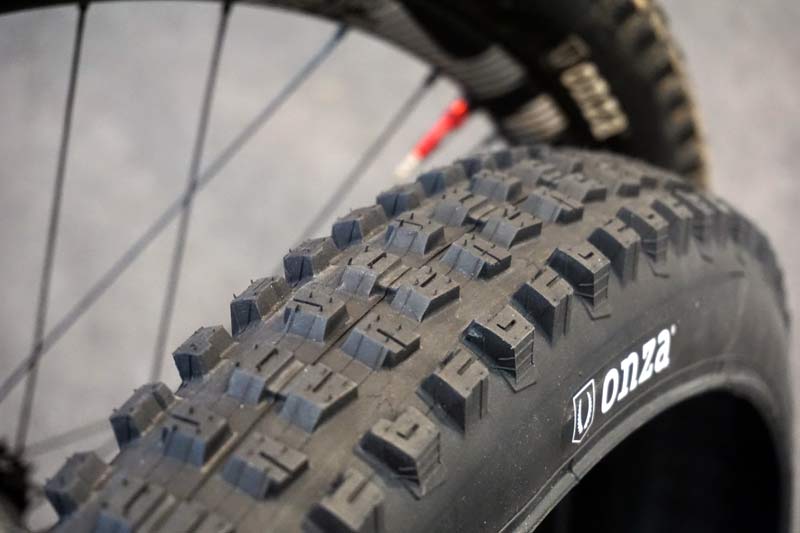As a pared down option to their Wazia fat bike tire, the new Terrene Cake Eater is designed to be a faster rolling, lighter weight option for all conditions. The center knobs are lower profile, keeping it quick in the straightaways, but get zigzag siping for improved multi-surface traction.
To add more all-season capability, the transition, intermediate and side cornering knobs all have stud pockets.
Adding to the versatility are various price options, including a pre-studded model for just $150. With most studded tires coming in at or over $200, the new Cake Eater will offer a standard casing version equipped with new aluminum/tungsten flat tipped studs for $150. Or, get the upgraded tire with their 60tpi Tough casing without studs for $120, or with their premium triple-point tungsten carbide studs for $200. All in 26×4.0 and 26×4.6 sizes.
They’ll follow it up with a Cake Eater Light 120tpi casing model in 26×2.4 with studs ($200) or without ($120), as well as a 27.5×2.8 size with studs ($160) or without ($80). Both use the premium studs, which have a lower height for reduced rolling resistance.
The McFly 2.8 “plus” tires that launched this summer are finally shipping in both 27.5″ and 29er options.
ONZA AQUILA TAKES GWIN EDITION ENDURO-ING
Officially introduced last year as a concept and going on sale this July, the Aaron Gwin Signature edition Aquila downhill tire was only available in a 27.5 wire bead DH casing option, with two rubber compounds to choose from. Now, Onza is adding 29er sizes and folding bead enduro/all-mountain constructions.
All models will stick with the 2.4″ width, but you’ll be able to pick from 27.5 or 29er. The new enduro versions get their tubeless-ready 60tpi FRC (free ride) casing with a folding Kevlar bead and RC2 65a/55a dual rubber compound. Available late this year or early next.
On other products, they’ll offer their REC (reinforced electro casing) build for e-bikes, which gets a whopping 5 layers combining Aramid and 60tpi nylon casings. And their Ibex and Canis tread patterns, which serve the XC to all-mountain categories, will get a new 27.5 x 2.85 width.

